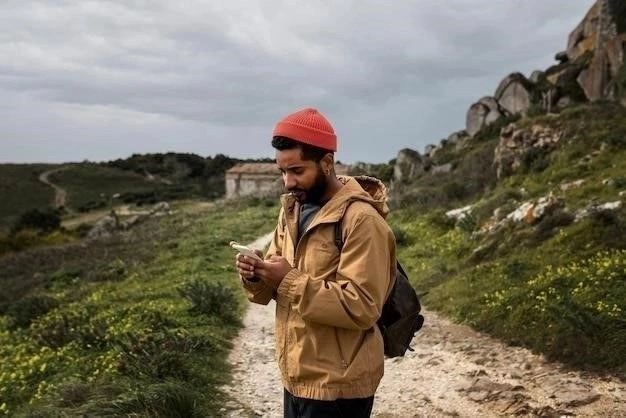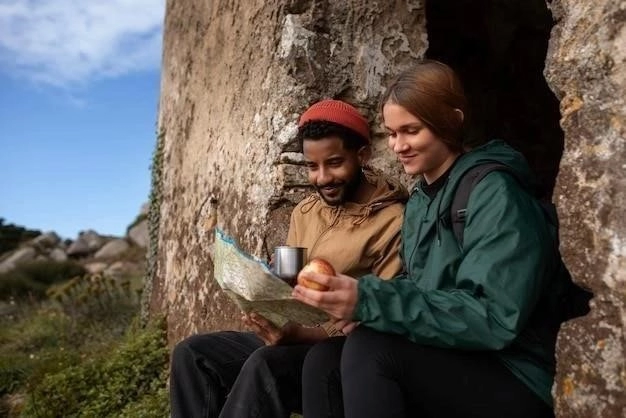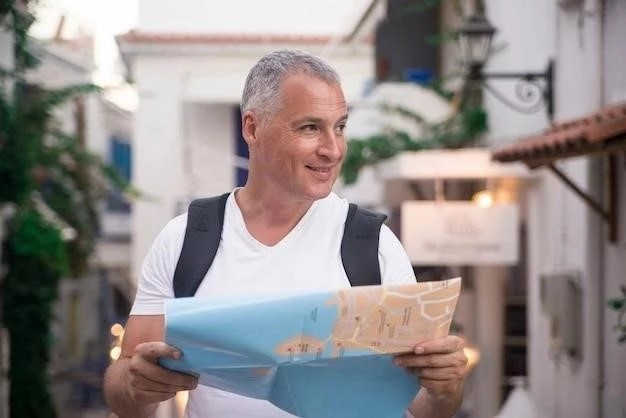East Timor, a nation on the island of Timor in Southeast Asia, presents a world of untouched beauty, rich culture, and captivating history. Emerging from a past marked by struggle, East Timor welcomes travelers with open arms to discover its mountainous landscapes, vibrant coral reefs, and the warmth of its people. This guide will equip you with the essentials for planning an unforgettable journey to this hidden gem of Southeast Asia.
Planning Your Trip
Embarking on a journey to East Timor requires careful planning to ensure a rewarding experience. Below are key aspects to consider when crafting your itinerary:
Best Time to Visit:
East Timor experiences a tropical climate with a wet and dry season. The dry season, from May to October, offers the most favorable conditions for outdoor activities and exploration. During these months, rainfall is minimal, and humidity is lower, providing pleasant weather for hiking, diving, and enjoying the coastal areas.
Visa Requirements:
Most nationalities can obtain a visa on arrival in East Timor for tourism purposes. However, it is essential to verify the specific visa regulations based on your nationality before travel. Ensure your passport has at least six months of validity remaining from your planned departure date.

Health & Safety:
Consult your healthcare provider for recommended vaccinations and health precautions before traveling to East Timor. It is advisable to pack mosquito repellent, sunscreen, and any necessary medications. Additionally, stay informed about local safety guidelines and be mindful of your belongings.
Getting Around:
While East Timor offers various transportation options, navigating the country can be challenging. Domestic flights connect major cities, but road conditions can be unpredictable. Consider renting a car with a driver for greater convenience and accessibility to remote areas. Local transportation includes taxis and microlets, shared minivans, for shorter distances.
Language:
The official languages of East Timor are Tetum and Portuguese. English is not widely spoken, particularly in rural communities. Learning a few basic Tetum or Portuguese phrases can enhance your interactions with locals and enrich your cultural experience. Consider carrying a phrasebook or utilizing translation apps for ease of communication.
Visas & Entry Requirements
To ensure a smooth entry into East Timor, it is essential to familiarize yourself with the visa regulations and customs procedures. The following information provides a comprehensive overview of the requirements for travelers:
Visa Policy:
East Timor offers visa-free entry for citizens of several countries, typically for tourism purposes and short stays. However, it is crucial to verify the specific visa exemptions applicable to your nationality before traveling. Citizens of many countries are eligible to obtain a visa on arrival at the Presidente Nicolau Lobato International Airport in Dili. This visa is typically valid for 30 days and can be extended for an additional 30 days at the Immigration Department in Dili.
Visa on Arrival Requirements:
To obtain a visa on arrival, you must present the following documents:
- Passport with at least six months of validity remaining from your intended date of departure from East Timor.
- Completed visa application form, obtainable upon arrival.
- One passport-sized photograph.
- Proof of sufficient funds to cover your stay in East Timor.
- Confirmed return or onward ticket.
It is essential to note that immigration officials have the authority to request additional documentation or deny entry if deemed necessary.
Getting There & Around
Navigating East Timor’s diverse landscapes requires an understanding of the available transportation options. From international gateways to local transportation modes, this guide provides essential information for seamless travel throughout the country.
Arrival by Air:
The primary international airport serving East Timor is Presidente Nicolau Lobato International Airport (DIL), located just outside the capital city of Dili. The airport receives flights from regional hubs such as Bali, Singapore, and Darwin, Australia. Several airlines offer connections to Dili, providing travelers with a range of options based on their itineraries and budget preferences.
Domestic Flights:
For those seeking to explore beyond Dili, domestic flights offer a convenient and time-efficient option. Air Timor operates scheduled flights connecting Dili with other major towns and cities, including Baucau, Oecusse, and Suai. These flights often offer scenic views of the country’s mountainous terrain and coastline, enhancing the travel experience.
Road Travel:
East Timor’s road network is continually improving, yet it remains advisable to exercise caution and plan journeys in advance. While major highways connecting larger towns are generally well-maintained, venturing off the beaten path can present challenges with unpaved roads and varying road conditions. Renting a car with a driver is a popular option for exploring remote regions and navigating unfamiliar routes.
Accommodation
East Timor presents a diverse range of accommodation options catering to varying budgets and preferences. From intimate guesthouses to upscale hotels, travelers can find lodging that complements their travel style and needs.
Hotels:
Dili, the capital city, offers a concentration of hotels, ranging from international chains to locally owned establishments. These hotels provide comfortable accommodations with modern amenities, catering to business travelers and tourists alike. Many hotels feature restaurants, swimming pools, and other facilities to enhance guest experiences.
Guesthouses and Pensions:
For a more intimate and culturally immersive stay, consider guesthouses and pensions scattered throughout the country. These smaller accommodations offer a personalized touch, with local hosts often providing insights and recommendations to enhance your exploration of the region. While amenities may be more modest than larger hotels, guesthouses offer a unique opportunity to connect with the local culture.
Homestays:
For a truly immersive cultural experience, homestays offer the chance to live with a local family. This type of accommodation provides an unparalleled opportunity to engage with the local way of life, learn about East Timor’s traditions, and gain a deeper understanding of the country’s culture. Homestays are available in various locations, often in more rural areas, providing a glimpse into the authentic East Timorese way of life.
Food & Drink
East Timor’s culinary landscape reflects a blend of Southeast Asian and Portuguese influences, resulting in unique and flavorful dishes that captivate the palate. From traditional Timorese cuisine to international options, travelers can embark on a gastronomic journey that tantalizes the taste buds.

Traditional Cuisine:
At the heart of East Timorese cuisine is a focus on fresh, locally sourced ingredients. Rice serves as a staple, often accompanied by dishes featuring seafood, pork, chicken, and an array of vegetables. Aromatic herbs and spices, including turmeric, ginger, and lemongrass, infuse dishes with distinct flavors that embody the essence of Timorese cooking.
Portuguese Influences:
East Timor’s Portuguese heritage is evident in its culinary offerings. Classic Portuguese dishes, such as grilled fish, stews, and sausages, have found a home in East Timor, often adapted with local ingredients and spices to create a unique fusion of flavors.
International Fare:
In larger cities and tourist areas, travelers can find a growing selection of international restaurants catering to diverse palates. From Italian and Chinese cuisine to Indonesian and Thai options, these establishments provide a change of pace while upholding quality standards.
Things to Do
East Timor presents a tapestry of experiences for travelers seeking adventure, cultural immersion, and natural beauty. From exploring historic sites to diving in pristine waters, the country offers a diverse range of activities to captivate every interest.
Explore Dili’s Historical Gems:
Begin your journey in Dili, the vibrant capital city, where history and culture intertwine. Visit the iconic Cristo Rei statue, perched atop a hill overlooking the city, offering panoramic views of the Timor Sea. Explore the Resistance Museum, a poignant reminder of East Timor’s struggle for independence, and the Tais Market, where you can browse for traditional handwoven textiles.
Discover Untouched Natural Beauty:
Venture beyond the capital to discover East Timor’s breathtaking natural landscapes. Hike through the lush forests of Mount Ramelau, the highest peak in the country, offering stunning views from its summit. Explore the cascading waterfalls and serene beauty of Jaco Island, a secluded paradise renowned for its pristine beaches and crystal-clear waters.
Dive into Underwater Wonders:
East Timor boasts a thriving marine ecosystem, making it a haven for scuba diving and snorkeling enthusiasts. Discover vibrant coral reefs teeming with marine life in Atauro Island’s pristine waters, or explore the diverse underwater landscapes of Nino Konis Santana National Park, home to an array of coral species, fish, and other marine creatures.

History & Culture
East Timor’s history and culture are deeply intertwined, shaped by indigenous traditions, colonial influences, and a resilient spirit forged through a long struggle for independence. Exploring this rich tapestry offers travelers a deeper understanding of this captivating nation.
Ancient Roots:
Archaeological evidence suggests that East Timor has been inhabited for millennia, with early human presence dating back over 40,000 years. The arrival of Austronesian peoples around 4,000 years ago laid the foundation for the development of distinct Timorese cultures, characterized by intricate weaving traditions, animistic beliefs, and a strong connection to the land.
Colonial Encounters:
East Timor’s strategic location in Southeast Asia attracted the attention of colonial powers. The Portuguese arrived in the 16th century, establishing a presence that would shape the country’s history for centuries. Portuguese influence is evident in the country’s official language, architecture, and religious traditions.

Path to Independence:
East Timor’s journey to independence was marked by resilience and struggle. After centuries of Portuguese rule, East Timor declared independence in 1975. However, this newfound freedom was short-lived as Indonesia invaded and occupied the country for 24 years. During this period, the East Timorese people endured significant hardship while maintaining their fight for self-determination.
Nature & Wildlife
East Timor, a land of dramatic landscapes and diverse ecosystems, harbors a surprising array of flora and fauna. From lush mountains to vibrant coral reefs, the country offers nature enthusiasts and wildlife lovers ample opportunities for exploration and discovery.

Avian Paradise:
East Timor is a haven for birdwatchers, boasting over 200 avian species, including many endemic and rare varieties. The country’s varied habitats, from montane forests to coastal wetlands, support a rich diversity of birdlife. Keep an eye out for the Timor Green Pigeon, with its vibrant plumage, or the critically endangered Yellow-crested Cockatoo, found only in this part of the world.
Marine Marvels:
Beneath the surface of East Timor’s azure waters lies a world of marine biodiversity. The country’s coral reefs, considered among the most pristine in the Coral Triangle, teem with colorful fish, turtles, and other marine creatures. Divers and snorkelers can explore underwater gardens, encounter reef sharks, and marvel at the intricate beauty of coral formations.
Mountainous Terrain:
East Timor’s mountainous interior is home to a variety of ecosystems, from dense rainforests to grasslands. Trekking through these rugged landscapes offers encounters with unique flora, including orchids and ferns, as well as the chance to spot endemic mammals, such as the Timor Deer and the Northern Common Cuscus.
Diving & Snorkeling
East Timor’s underwater realm beckons adventurers with its pristine coral reefs, abundant marine life, and visibility that often extends beyond 30 meters. Whether you’re an experienced diver or a snorkeling enthusiast, these waters promise unforgettable encounters with the wonders of the deep.
Atauro Island: A Diver’s Paradise:
A short boat ride from Dili lies Atauro Island, a haven for divers of all levels. The island’s coral walls, slopes, and seamounts are teeming with marine life, from colorful reef fish and graceful rays to macro creatures like nudibranchs and pygmy seahorses. Manta rays and whale sharks are also occasional visitors to these waters.
Tasi Tolu: Shipwreck Exploration:
For a unique diving experience, head to Tasi Tolu, where a Japanese cargo ship, sunk during World War II, rests on a sandy bottom. Now a vibrant artificial reef, the wreck attracts a variety of marine life, including barracuda, batfish, and the occasional white-tip reef shark.
Snorkeling Adventures:
Even without diving certifications, you can witness the beauty of East Timor’s underwater world. Many beaches and coastal areas offer excellent snorkeling opportunities, with calm, clear waters and coral reefs just meters from the shore. Don your mask and fins to discover a kaleidoscope of fish, coral formations, and other marine creatures.

Trekking & Hiking
East Timor’s mountainous terrain and lush landscapes offer a paradise for trekking and hiking enthusiasts. From challenging climbs to leisurely walks, the country presents trails for all levels, rewarding adventurers with breathtaking views, encounters with local communities, and a sense of accomplishment.
Mount Ramelau: A Spiritual Ascent:
Ascending Mount Ramelau, East Timor’s highest peak at 2,963 meters, is a pilgrimage for both locals and visitors. The challenging but rewarding trek leads through diverse ecosystems, from coffee plantations to eucalyptus forests, culminating in panoramic views from the summit, crowned by a statue of the Virgin Mary.
Jaco Island: Coastal Trails and Hidden Beaches:
Beyond its pristine beaches, Jaco Island offers scenic hiking trails that wind along its coastline. Trek through forests and along limestone cliffs, discovering hidden coves, secluded beaches, and breathtaking views of the Timor Sea. Keep an eye out for exotic birdlife and the unique flora that thrives in this coastal environment.
Community-Based Tourism Treks:
For a culturally immersive experience, consider a community-based tourism trek. Several organizations and villages offer guided treks that provide insights into local life, traditions, and the natural environment. These treks often involve overnight stays in traditional villages, allowing you to connect with local communities and experience their hospitality firsthand.
Beaches & Islands
East Timor’s coastline, stretching over 700 kilometers, is adorned with pristine beaches, secluded coves, and idyllic islands. From white sand shores lapped by turquoise waters to rugged cliffs overlooking the Timor Sea, the country offers a beach escape for every traveler.
Atauro Island: Secluded Paradise:
A short ferry ride from Dili, Atauro Island beckons with its untouched beauty. This mountainous island boasts secluded beaches, crystal-clear waters teeming with marine life, and a tranquil atmosphere that invites relaxation and exploration. Snorkel, dive, hike, or simply unwind on the pristine shores, immersing yourself in the island’s serenity.
Jaco Island: A Hidden Gem:
Accessible only at low tide, Jaco Island is a true hidden gem. This small, uninhabited island boasts pristine white sand beaches, vibrant coral reefs teeming with marine life, and a sense of isolation that is hard to find elsewhere. Spend your days snorkeling, swimming, or simply basking in the sun on this idyllic island paradise.
Areia Branca Beach: Sunset Splendor:
Located just east of Dili, Areia Branca Beach, also known as “White Sands Beach,” offers a picturesque escape from the capital. This long stretch of white sand beach is perfect for swimming, sunbathing, and enjoying leisurely strolls along the shoreline. As the sun dips below the horizon, the beach transforms into a magical setting, with vibrant hues painting the sky.
Safety & Health
While East Timor is generally a safe and welcoming destination, it is essential for travelers to be aware of potential health risks and take necessary precautions to ensure a safe and enjoyable trip.
Health Precautions:
Before traveling to East Timor, consult your healthcare provider regarding recommended vaccinations and necessary health precautions. Common vaccinations include Hepatitis A and B, typhoid, and tetanus. It’s also advisable to pack a well-stocked first-aid kit, including mosquito repellent, sunscreen, and any personal medications.

Food and Water Safety:
To prevent traveler’s diarrhea, consume food from reputable establishments and opt for bottled water over tap water. Be cautious with street food and ensure fruits and vegetables are washed thoroughly before consumption. Carrying hand sanitizer is a good practice for maintaining hygiene.
Transportation Safety:
Road conditions in East Timor can be challenging, particularly in rural areas. If renting a car, opt for a four-wheel drive vehicle and a reputable agency. When using public transportation, exercise caution and be aware of your surroundings. It’s advisable to avoid traveling at night, especially in remote areas.
Money & Costs
Understanding East Timor’s currency and cost of living is crucial for planning your travel budget. While the country offers affordable options for budget travelers, knowing how to manage your money and anticipated expenses will ensure a smoother trip.
Currency:
The official currency of East Timor is the United States Dollar (USD). While there is a local currency, the East Timorese centavo, it is rarely used, and transactions are primarily conducted in US dollars. It’s recommended to carry a mix of small and large denominations, as getting change for larger bills can sometimes be difficult, especially in smaller establishments.
ATMs and Credit Cards:
ATMs are available in major cities and towns, accepting widely recognized international debit and credit cards. However, it’s advisable to carry some cash as backup, as ATMs may occasionally run out of cash or experience technical issues. Credit card acceptance is limited, particularly outside major hotels and restaurants.
Cost of Living:
East Timor generally has a lower cost of living compared to many Western countries. Accommodation, food, and transportation are relatively affordable, especially if you’re willing to be flexible with your choices. Budget travelers can find guesthouses and local eateries offering meals at very reasonable prices.










